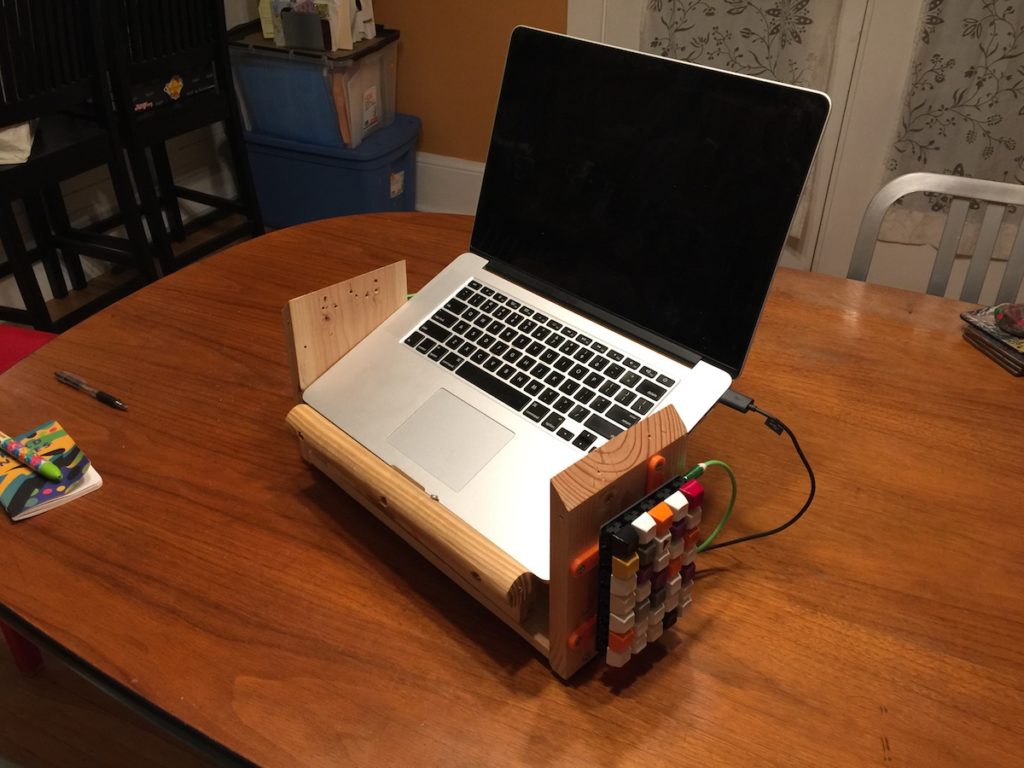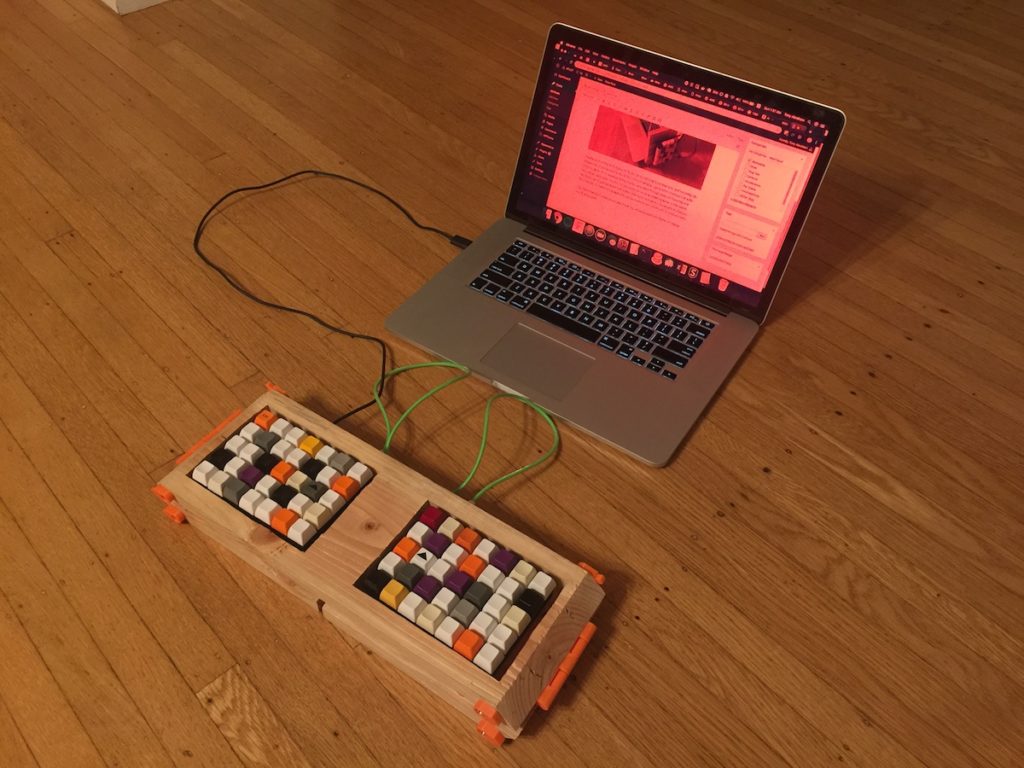Keyboard Mech
Today I made some decent progress on my next keyboard/laptop stand. I won’t tell you exactly what it is yet, but I’ve started calling it either Keyboard Mech, Carrying Desk, Walking Around Desk, Scrapwood Proton Pack, or other, stupider names which aren’t worth sharing.
There’s a lot left to figure out, and I really like to solve these problems as I assemble the piece. For example, how can I stabilize the laptop on a 2 x 2 wooden post, especially in wild situations? The laptop has a lot of downward weight on a thin panel, and I’d like to transfer it to another panel. Can I do that with an elaborate harness, or will I still need another belt to stabilize it? Can someone explain how I ever found a mate when I occupy my time with hobbies like this?
Much more to come, after I process these problems while I sleep. Except the last one. That one’s for you.




